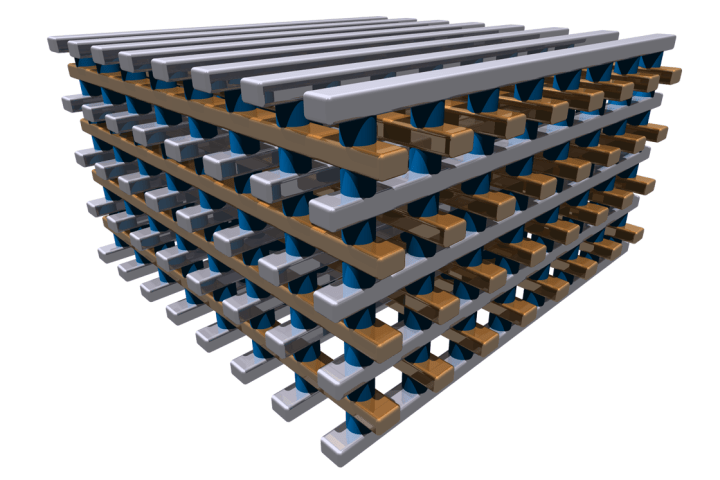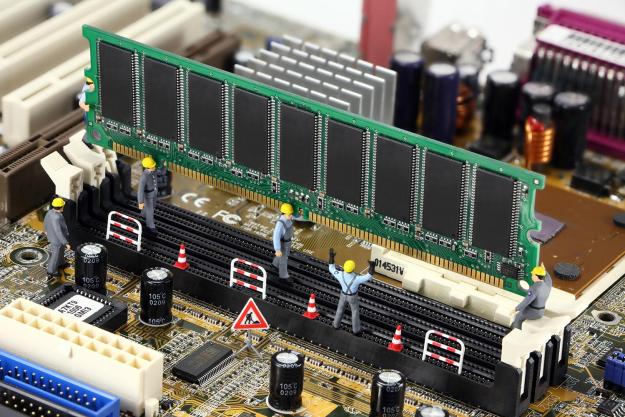
What if we told you that a terabyte of data can fit on something the size of a postage stamp? You’d think we’re crazy, right? Well, California-based startup Crossbar has done just that. The company revealed plans for storage chips that will be able to pack in a terabyte worth of data in a tiny space thanks to resistive RAM (RRAM). It would essentially replace NAND flash memory, which is the current standard in the gadget industry, and pretty much all smartphones and tablets use it. However, not very many people know about RRAM and how it works, and in order to understand Crossbar’s intentions to replace NAND, we should know the differences between the two different types of memory.
What is RRAM?
Crossbar boasts that its RRAM storage solution is capable of storing up to 1TB of data on a single chip, thanks to the ability of “3D-stacking” multiple cells in different configurations in order to save space while still upping the storage limits. All of this can fit into a tight, tiny space, which could then fit into mobile devices. The company also says that the new chip technology consumes less energy (approximately 20 times less), extending battery life in devices “to weeks, months, or years.”
Speed wise, Crossbar claims that RRAM has a write speed that’s 20 times faster than NAND memory (around 140MB/s, compared to 7MB/s with NAND), and is 10 times more reliable as well, noting that it “approaches DRAM reliability” levels. Read speeds are said to be around 17MB/s.

What’s so special about RRAM?
For starters, unlike other types of RAM, RRAM is non-volatile, meaning that it can keep and store data even if the power is cut off to it. Volatile memory (like the DDR RAM in your computer) can only store data up until a certain point, like when the power is cut off. This is why you lose information when your computer suddenly shuts down. Of course, NAND memory is also non-volatile, and both of them are able to store data permanently.
However, that’s pretty much where the similarities end. RRAM uses a different method to store data, by creating different levels of electrical resistance using ions (charged atoms), rather than electrons that create electrical charges in order to store bits of data (hence the name “resistive RAM”). This means that RRAM requires less energy to operate and leaves room for a greater number of write cycles for a longer lifespan, depending on the components being used. With the ability for high and low levels of resistance, this allows RRAM to store different values on the chip to make up bits of data.

The concept of RRAM has actually been around since the 1960s, but it’s only been until just recently that the concept was deemed practical and physically possible by researchers. And based on the technology in RRAM, it could even be used to replace or supplement other types of memory besides just NAND, including DDR RAM. This means that the days of losing data due to power outages could be over. With RRAM, computers could prevent data from being lost when the machine is shut off, unlike DDR RAM, which doesn’t save data when the power gets cut off.
What does the future hold for RRAM?
On top of higher-capacity mobile devices, we could see much higher-capacity solid-state drives come to fruition with RRAM. Solid-state drives currently use NAND flash memory, and they’re able to stuff in way more NAND chips for high-capacity storage, reaching up to 1TB. However, with RRAM, we could see solid-state storage jump into the multiple-terabyte levels – something that hard disk drives have only been able to achieve thus far.
When will we see RRAM hit the mainstream?
We’ve seen a lot of crazy concepts in technology – flexible displays and the Hyperloop come to mind – and most of these types of concepts seem pretty far-fetched, sometimes never hitting the market. But Crossbar says that the manufacturing of the chips can utilize current production methods, meaning there’s no need to vastly revolutionize the manufacturing process before the chips can be made. This means that Crossbar could technically pump out the volume needed right away in order to reliably replace NAND in devices easily.
While the goal is to have RRAM replace NAND memory at some point, the transition could take some time. As for where Crossbar is currently at with the development of its RRAM storage technology, it doesn’t have any chips in production at the moment, and it’s still a bit early for the company to provide an exact timeline. It does claim to have a working prototype built, so the first wave of mass production could be right around the corner. However, as with any technology in its early stages, Crossbar could come across hiccups in the manufacturing process, resulting in delays and the opportunity for other companies to pick up the baton and make a splash.
Furthermore, Crossbar doesn’t exclusively hold all the patents for RRAM, although it owns a few, so it’ll be interesting to see how the business side of things play out in the production phases of these new storage chips once they get off their feet, and it’s very possible that we’ll see the technology get licensed out to various chip manufacturers in the future.
Photos via Crossbar
Editors' Recommendations
- How to choose the best RAM for your PC in 2024
- How to enable XMP to run your RAM at full speed
- SSDs could be as cheap as HDDs in time for Black Friday
- How to test RAM: Troubleshooting to find bad RAM
- How to check how much RAM you have


